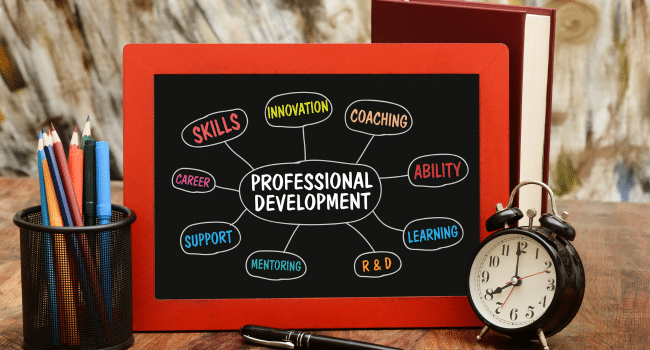Effective Strategies for Teacher Training and Development
- September 19, 2024
Teachers are the cornerstone of any successful education system. To ensure that they can provide high-quality instruction and adapt to the evolving educational landscape, ongoing teacher training and development are crucial. This blog will explore effective strategies for teacher training and development that can help educators enhance their skills, stay updated with best practices, and ultimately improve student learning outcomes.
Understanding Teacher Training and Development
Teacher training and development encompass a range of professional learning activities designed to enhance teachers’ knowledge, skills, and competencies. These activities can include formal education, workshops, mentoring, coaching, and self-directed learning.
Key Strategies for Effective Teacher Training and Development
- Continuous Professional Development (CPD)
Ongoing Learning: CPD involves regular training sessions and workshops that allow teachers to continuously update their skills and knowledge. This approach ensures that teachers remain current with the latest educational research, technologies, and methodologies.
Flexible Learning Options: Offer various formats for CPD, such as online courses, in-person workshops, and hybrid models, to accommodate teachers' schedules and learning preferences.
- Mentoring and Coaching
- Peer Mentoring: Pairing new teachers with experienced mentors provides invaluable support and guidance. Mentors can offer practical advice, model effective teaching practices, and help new teachers navigate the challenges of the classroom.
- Instructional Coaching: Coaches work with teachers to identify areas for improvement, set goals, and develop action plans. This personalized approach helps teachers refine their instructional techniques and enhance their effectiveness.
- Collaborative Learning Communities
- Professional Learning Communities (PLCs): PLCs are groups of educators who meet regularly to share experiences, discuss challenges, and collaboratively develop solutions. This collaborative approach fosters a culture of continuous improvement and professional growth.
- Cross-School Collaboration: Encourage collaboration between teachers from different schools to share best practices and learn from diverse perspectives. This can be facilitated through online forums, inter-school visits, or joint workshops.
- Focus on Practical Application
- Hands-On Workshops: Design training sessions that include practical, hands-on activities. This approach helps teachers directly apply new concepts and techniques in their classrooms.
- Lesson Study: Teachers work together to plan, observe, and analyze actual classroom lessons. This collaborative process allows teachers to refine their instructional strategies based on real-world observations and feedback.
- Integration of Technology
- EdTech Training: Provide training on the effective use of educational technology tools. This includes not only how to use the tools but also how to integrate them into the curriculum to enhance teaching and learning.
- Online Learning Platforms: Utilize online platforms to deliver training modules, share resources, and facilitate discussions. This allows for flexible, self-paced learning and easy access to a wealth of professional development materials.
- Reflective Practice
- Journaling: Encourage teachers to keep reflective journals where they can document their experiences, challenges, and insights. Reflective practice helps teachers critically analyze their teaching methods and identify areas for improvement.
- Peer Observation and Feedback: Implement a system of peer observations where teachers observe each other’s classes and provide constructive feedback. This practice promotes a culture of openness and continuous improvement.
- Customized Training Programs
- Needs Assessment: Conduct regular needs assessments to identify the specific training needs of teachers. Tailor professional development programs to address these needs, ensuring that the training is relevant and impactful.
- Differentiated Training: Recognize that teachers have different levels of experience and expertise. Offer differentiated training sessions that cater to varying skill levels, allowing all teachers to benefit from professional development.
- Recognition and Incentives
- Certification and Badges: Implement certification programs or digital badges to recognize teachers’ achievements in professional development. This not only motivates teachers but also provides them with tangible proof of their skills and competencies.
- Incentives for Participation: Offer incentives such as stipends, additional professional development credits, or opportunities for career advancement to encourage teachers to participate in training programs.
Effective teacher training and development are essential for fostering a high-quality education system. By implementing strategies such as continuous professional development, mentoring, collaborative learning, practical application, technology integration, reflective practice, customized training, and recognition, educational institutions can support teachers in their professional growth. Investing in teacher development ultimately leads to better instructional practices, improved student outcomes, and a more dynamic and responsive education system.

